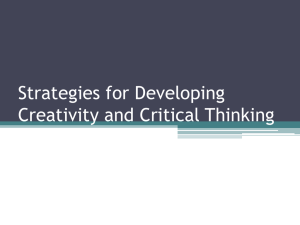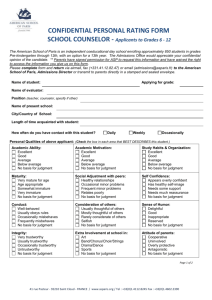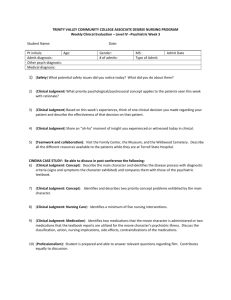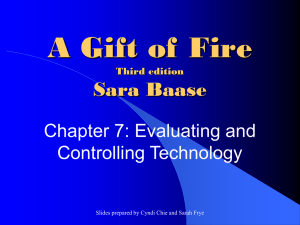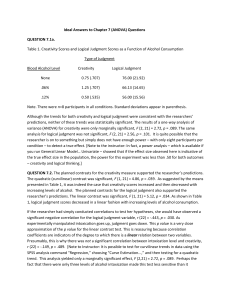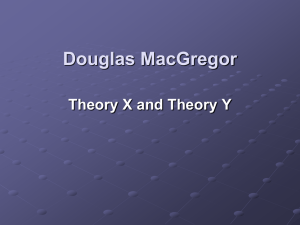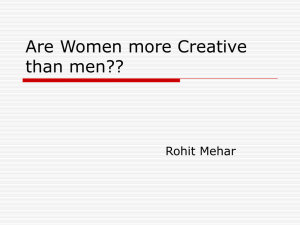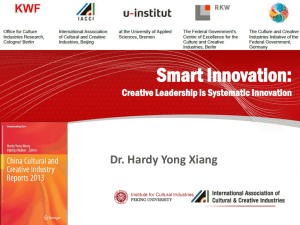Creativity in Business DEG 2
advertisement
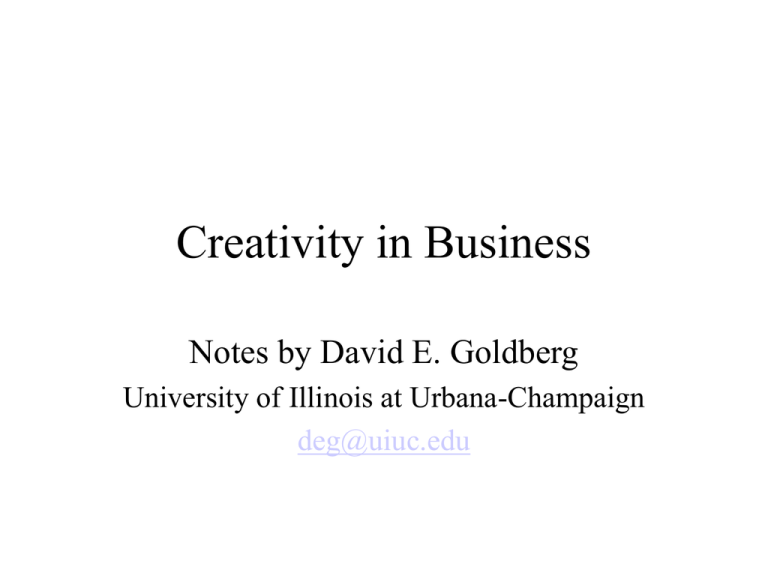
Creativity in Business Notes by David E. Goldberg University of Illinois at Urbana-Champaign deg@uiuc.edu The Text • Ray, M. & Myers, R. (1986). Creativity in business. New York: Doubleday. • Created for course at Stanford B-school: Creativity in Business. • Myers: Artist, Musician, and Consultant • Ray: Social psychologist and professor. Motivation • Overly analytic approach of the 70s and 80s (MBAs run amok?) partially responsible for Japanese invasion? • Renewed interest in creativity and innovation. • Recalls creativity spurt of the 50s. • Garbage-can model of management. Business as Art • Van Dyck, W., founder of Windfarms, Ltd. • The highest art form is really business. It is an extremely creative form, and can be more creative than all the things we classically think of as creative. In business, the tools with which you’re work are dynamic: capital and people and markets and ideas. [These tools] all have lives of their own. So to take those things and to work with them and reorganize them in new and different ways turns out to be a very creative process. Amabile’s Definition • Theresa Amabile, Social Psychology of Creativity. • Creativity: A response will be judged as creative to the extent that (a) it is both a novel and appropriate, useful, correct, or valuable response to the task at hand and (b) the task is heuristic rather than algorithmic. Your Creative Experiences • Exercise: – Sit comfortabl.y – Breath deeply. – Think of a time when you had a great idea. • Remember – How it felt to have the idea. – Specific problem? How long a struggle? Emotions? – Eureka moment? What happened next to idea? Was it used. Inner Creative Resources • Essence is 5-fold: – – – – – Intuition: Interrelationship with design. Will: compelling vision or mission. Joy: Bright shimmering quality. Strength: To breakthrough resistance. Compassion: Kindness for yourself and others. Where is the Essence? • Technique cannot overcome the stumbling block. • Inhibited by – Fear – Inner judgment – Chattering of the mind • Conflict between false personality and Essence. Preparation • Four steps: – – – – Surrender. Destroy judgment. Pay Attention. Ask Dumb Questions. Pay Attention • The obscure we see eventually, the completely apparent takes longer. Edward R. Murrow. • Buddhism’s mindfulness: attention without conscious thought. • Listening without opinions. Asking questions without slant. Ask Dumb Questions • Judge questions by the fruit they bear. • Non-judgmental, open. • 12 standard issue – What is my aim? What’s going on? – What is VOJ saying? Is this me or someone else? What is it that this person provokes in me. – What is objective reality? What is emotional truth? What pain am I avoiding? What stubbornness do I cling to? – Is this choice my real choice? What don’t I yet understand? Who said that, my mom or dad? Inspiration and Implementation • • • • • Do the easy, effortless, and enjoyable. Don’t think about it. Ask yourself it is a yes or a no. Be ordinary. Be in the world but not of it. 3 E’s: Easy, Effortless & Enjoyable • Time flies when you’re having fun. • Make an EEE list, right now. • Living out your own life purpose: – – – – – – – – Rank tasks in EEE order. Decompose larger tasks into smaller ones. Do one thing at a time. Change your attitude. Know when to quit. Be good to yourself Use a mantra. Reap your rewards.. Don’t Think About It • • • • Zen koan: Pouring tea. Is it a yes or a no? Be ordinary. What does this mean? Be in the world and not of it. Surrender • Leavitt’s categories of knowing: – Proactive, reactive, enactive – Enactive: Work on specific problem until right path found. • Stop striving: anxiety, tension, competition. • Apply yourself to task: – Maintain spirit of inquiry. – Acknowledge uncertain in outcome. Steps in Surrending • Letting go: – Physically: Tense muscles and release. – Mentally: Imagine thought as article of clothing, then remove. – Sleep: Ask question before going to bed. Stay in bed upon waking – Water: Contemplate water in sink, shower, seaside. – Inner guide: Ask Einstein or Buddha or ? VOJ: Voice of Judgment • Critical self prevents you from realizing your visions. • Types: – – – – Self-judgment. Judgment from others. Collective judgment: clique, society Judgment judging the judgment. Creation Implies Destruction • Every act of creation is first of all an act of destruction. Picasso. • Eggs must be broken to make an omelette. • If you remain constrained by convention, you will not create something new. • First create, then criticize. • Attack the judgment. Make it seem ridiculous.



